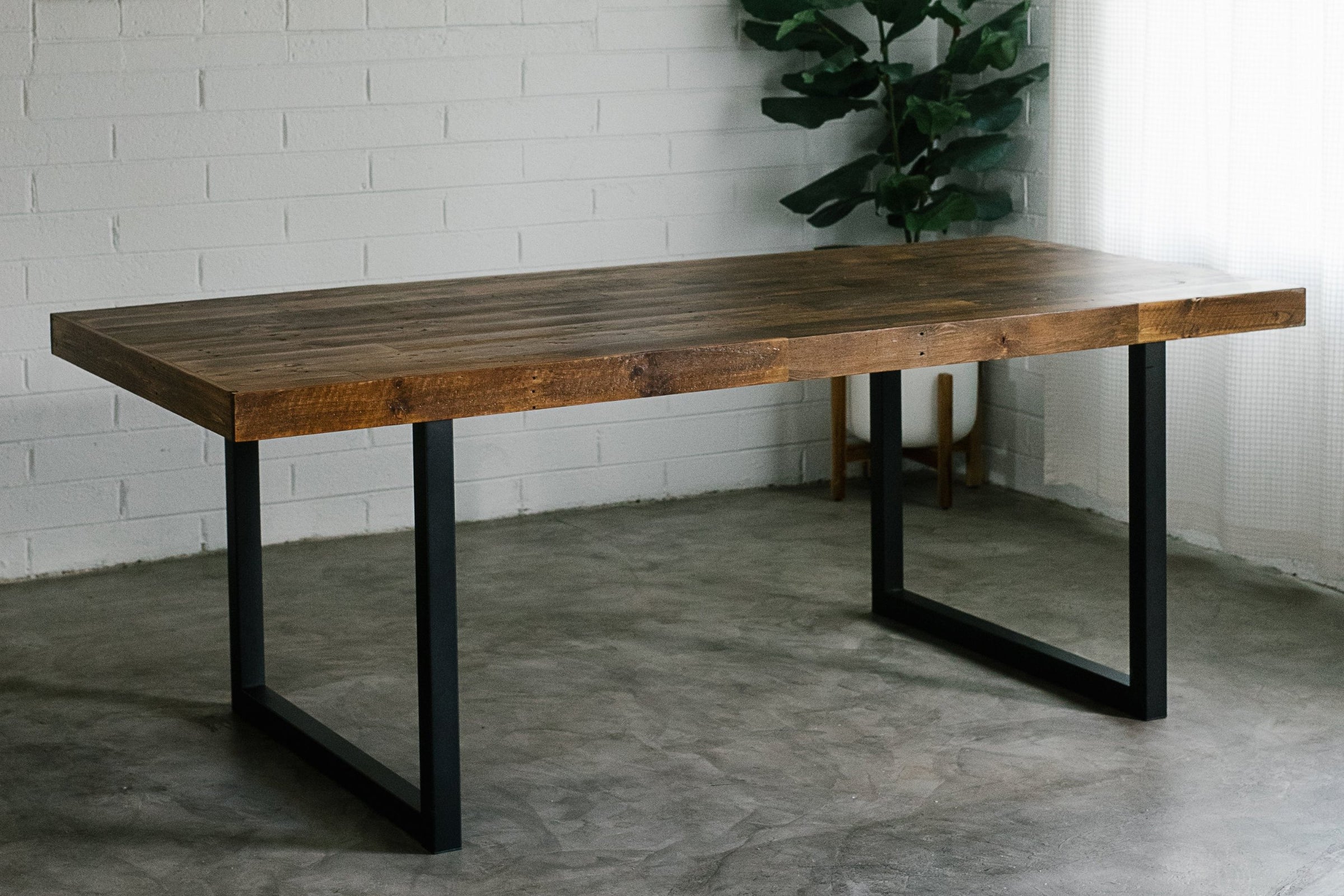Exploring the Different Sorts Of Dining Table Legs Timber for Your Dining Area
The choice of dining table legs wood can exceptionally affect both the practical and visual top qualities of your dining room. Solid wood options, such as oak and walnut, provide a traditional look with unparalleled sturdiness, while engineered timber options supply ingenious layouts that resemble the splendor of all-natural grains.
Strong Timber Options

In addition, strong wood is renowned for its toughness and longevity. Unlike crafted products, strong wood is less prone to warping and damages gradually when correctly maintained. This makes it a perfect choice for households or those who regularly organize celebrations. Each item of solid wood is distinct, showcasing individual characteristics that include to the charm and personality of the table.
Furthermore, solid wood can be finished in many methods, varying from all-natural oils to discolored surfaces, permitting home owners to customize their furnishings to match their style. In summary, choosing solid timber for eating table legs not only ensures structural honesty however likewise improves the visual appeal of the dining location, making it a worthwhile investment for any kind of home.
Engineered Timber Alternatives

Plywood, constructed from multiple layers of timber veneer, is stable and specifically strong, making it an exceptional option for dining table legs. Its split structure allows it to withstand adjustments in moisture and temperature far better than standard strong wood. MDF, on the various other hand, uses a smooth surface for paint or veneering, allowing designers to accomplish a sleek look while preserving structural integrity.
When selecting crafted timber choices, it is necessary to consider the intended use and preferred visual. These products not just improve the functionality of eating rooms yet also permit for better design flexibility, making certain that conventional and modern designs can coexist harmoniously.
Reclaimed Wood Features
Reclaimed wood offers an unique blend of sustainability and personality, making it an increasingly preferred selection for dining table legs. Sourced from old barns, factories, and various other structures, recovered wood symbolizes a background that brand-new products merely can not reproduce. Each piece lugs its own story, marked by distinctive blemishes, knots, and differing grain patterns, which add to a table's unique visual charm.
Along with its visual charm, reclaimed timber is an eco-friendly choice. By repurposing formerly used products, it decreases the demand for brand-new lumber, therefore helping to reduce and conserve woodlands waste. This aligns with an expanding consumer preference for lasting practices in home furnishings.
In original site addition, recovered timber is usually a lot more resilient than newly gathered wood because of its age. The natural drying out process that redeemed wood undertakes lead to a denser and stronger material, making it less prone to warping and splitting. This improves the longevity of dining tables, permitting them to stand up to the rigors of day-to-day use.
Softwood vs. Wood
When selecting dining table legs, recognizing the differences between softwood and hardwood is essential for attaining both visual and functional goals. They normally show find out here an even more rustic look, making them suitable for casual or country-style dining areas.
On the various other hand, hardwoods, sourced from deciduous trees like cherry, oak, and maple, are renowned for their thickness, toughness, and resilience. The intricate grain patterns and rich shades of hardwoods supply a classic and advanced charm, making them excellent for formal eating settings. While woods often tend to be a lot more pricey and heavier, their durability versus wear and tear commonly validates the investment.
Eventually, the option between softwood and hardwood for eating table legs ought to align with your layout vision, use requirements, and spending plan, guaranteeing that your dining space mirrors your personal style while staying functional over time.

Treatments and finishes
The visual allure and long life of table legs can be dramatically boosted via numerous surfaces and treatments. These processes not just shield the timber from damages however also elevate its look, permitting it to enhance diverse interior designs.
One typical treatment is staining, which penetrates the timber and improves its natural grain while including shade. Spots offer a rich, elegant appearance, allowing house owners more info here to match their furniture with existing decor. Alternatively, clear coatings such as polyurethane or varnish produce a protective layer without changing the wood's original tone, making certain durability versus deterioration.
Additionally, all-natural oils, like tung or linseed oil, nourish the timber and use a subtle luster, all while being green. These oils enable the surface to take a breath, avoiding dampness accumulation and potential warping.
For those seeking a rustic beauty, distressed or weather-beaten surfaces can be related to produce an aged appearance, adding personality to the piece. Inevitably, the choice of treatments and coatings depends upon individual preference, preferred aesthetic appeals, and the specific wood kind, making it important to take into consideration these elements when picking dining table legs for your area.
Verdict
Finally, the choice of eating table leg materials substantially affects both the aesthetic and practical elements of an eating space. Solid timbers, crafted alternatives, and recovered alternatives each deal distinct advantages, dealing with numerous preferences and requirements. Recognizing the distinctions between hardwoods and softwoods, together with ideal finishes and treatments, allows for notified decision-making. Eventually, the option of timber kind should align with preferred style, longevity, and environmental considerations, enhancing the overall dining experience.
The selection of dining table legs wood can profoundly affect both the practical and visual top qualities of your eating area - Dining Table Legs Wood. Strong timber choices, such as oak and walnut, supply a traditional appearance with unmatched resilience, while engineered wood alternatives offer innovative layouts that mimic the richness of all-natural grains. Solid wood provides a timeless top quality that can raise the general style of a dining room. Each item of strong timber is special, showcasing specific features that include to the charm and personality of the eating table
Additionally, reclaimed wood is frequently more sturdy than recently harvested timber due to its age.